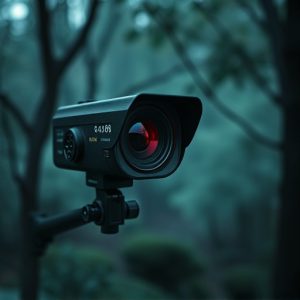Undetectable Cameras: Spotting Signals, Preventing Surveillance Stealth
Undetectable wireless security cameras, leveraging infrared tech and compact designs, offer stealth…….
Undetectable wireless security cameras, leveraging infrared tech and compact designs, offer stealth surveillance but require specialized equipment for detection due to their silent operation. While electromagnetic (EM) scanning is a popular method, it's ineffective against modern cameras that operate on frequency bands without noticeable EM signals, leading to false positives. As these camera technologies continue to advance, there's a growing need for more sophisticated and precise detection techniques. To protect against them, adopt a multi-faceted strategy including advanced encryption, limited wireless usage, wired connections, and reflective surfaces to disrupt camera lenses.
Undetectable wireless security cameras, often disguised as everyday objects, pose a unique challenge in home and business security. This article explores the art of uncovering these hidden monitoring devices. We delve into understanding their stealth capabilities, examining common detection methods, and showcasing advanced techniques to counter them. Additionally, learn proactive steps to deter installation and maintain privacy. Discover the latest strategies to safeguard your space from these elusive surveillants.
- Understanding Undetectable Wireless Security Cameras
- Common Detection Methods and Their Limitations
- Advanced Techniques for Signal Detection
- Proactive Measures to Avoid Detection
Understanding Undetectable Wireless Security Cameras
Undetectable wireless security cameras have advanced significantly, employing sophisticated technology to stay hidden from view while capturing footage. These cameras often use infrared illumination and compact design to avoid detection, making them popular for surveillance in residential and commercial settings. Their wireless capability allows for remote access and recording, further enhancing their appeal.
However, the very features that make these cameras undetectable also present challenges for potential users. To remain concealed, they are designed to operate silently and seamlessly, which means specialized equipment and expertise are needed to detect their presence. In many cases, only advanced signal analysis tools can identify the faint signals these cameras transmit, making it a complex task even for professionals.
Common Detection Methods and Their Limitations
Common Detection Methods and Their Limitations
While technology advances, so do methods for detecting hidden wireless security cameras, or undetectable wireless security cameras as they’re often referred to. Traditional approaches like visual inspection and electromagnetic signal scanning have their shortcomings. Visual checks can be time-consuming and require specialized equipment, making them impractical for large-scale surveillance. Moreover, these methods are easily bypassed by modern, advanced cameras that employ sophisticated hiding techniques.
Electromagnetic (EM) signal detection has emerged as a popular alternative, but it’s not foolproof. Many undetectable wireless security cameras operate on frequencies that don’t emit noticeable EM signals, rendering this method ineffective. Additionally, false positives are common due to the wide range of electronic devices that also emit EM signals. This highlights the need for more sophisticated and nuanced detection techniques to keep up with the evolving landscape of hidden camera technology.
Advanced Techniques for Signal Detection
In the pursuit of undetectable surveillance, wireless security cameras have evolved to employ advanced techniques for signal detection. One such method is the use of frequency hopping signals, which rapidly switch between different radio frequencies, making them harder for traditional detectors to pinpoint. These cameras operate on dynamic bands that are less likely to be detected by standard security systems.
Additionally, modern technology incorporates advanced encryption protocols to safeguard video transmission. This ensures that even if a signal is intercepted, the data is unreadable without the appropriate decryption keys. By combining these advanced techniques with sleek design aesthetics, undetectable wireless security cameras offer a sophisticated level of privacy protection, posing significant challenges to conventional monitoring systems.
Proactive Measures to Avoid Detection
To avoid detection by undetectable wireless security cameras, a proactive approach is essential. Start by understanding that these devices often rely on subtle signals and visual cues, so minimizing your digital footprint and physical presence is key. Employing advanced encryption methods for all communication channels can significantly hinder camera capabilities, ensuring your activities remain hidden from prying eyes.
Additionally, staying off the grid as much as possible makes a difference. Limit your use of wireless devices, especially in areas where hidden cameras might be present. Utilize wired connections whenever feasible to avoid leaving traceable signals. Moreover, consider using reflective surfaces strategically to disrupt camera lenses and create distractions, making it harder for these devices to capture clear images or recordings.
Hidden wireless security cameras have evolved to become more advanced, making their detection a complex task. While common methods like electromagnetic signal scanning and visual inspections can be effective for older models, modern undectable cameras employ sophisticated technology to evade traditional detection. Advanced techniques, such as artificial intelligence-powered analytics and frequency hopping signals, further complicate their discovery. To stay ahead of potential privacy breaches, individuals and organizations must adopt proactive measures, including staying informed about emerging detection technologies, regularly updating security systems, and implementing robust physical security protocols to prevent the installation of hidden cameras.


